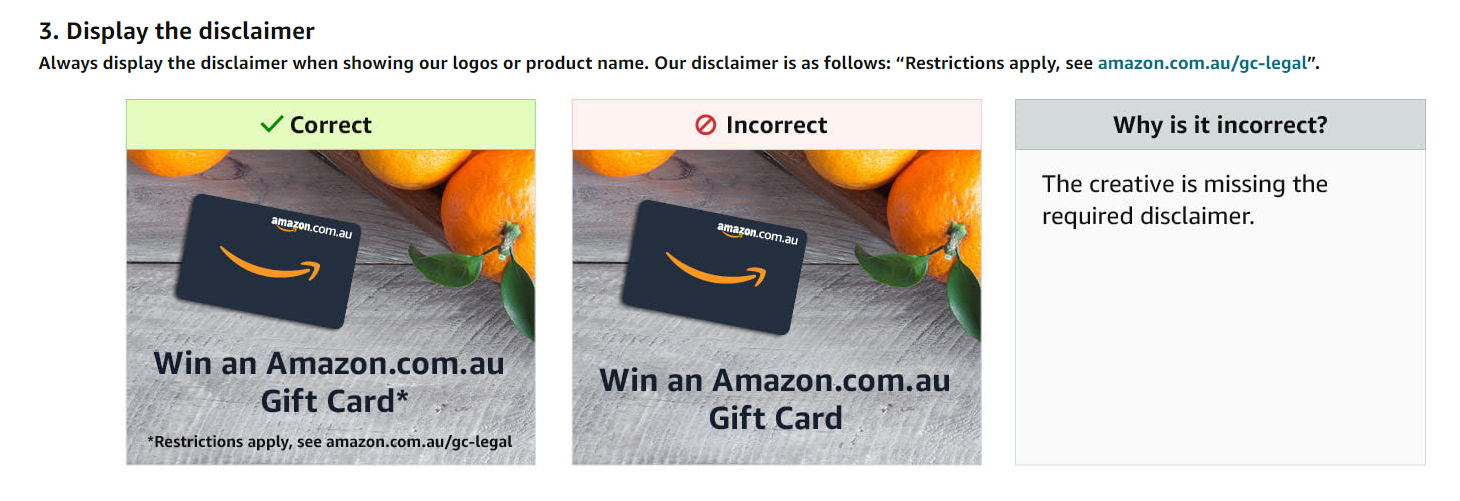Essential Guide to Amazon Branding Guidelines: Boost Your Sales in 2023
When it comes to navigating the online retail giant that is Amazon, understanding and adhering to the Amazon Branding Guidelines is not just recommended—it’s essential. These guidelines help maintain the integrity of your brand, ensure consistency in customer perception, and most importantly, prevent potential penalties that could impact your sales.
In this guide we’ll break down everything you need to know to not only meet Amazon’s expectations but to leverage them to boost your visibility, build brand trust, and skyrocket your sales.
Let’s get started.
Understanding Amazon Brand Guidelines
Amazon Brand Guidelines are a set of rules and recommendations that outline how third-party sellers, partners, and affiliates can use Amazon’s brand assets, such as logos, icons, and name. These guidelines are designed to ensure a consistent and positive image of Amazon’s brand across various platforms and communications.
Let’s dissect some of the primary Amazon Brand Guidelines that every seller should be aware of:
- Logo Usage: The Amazon logo is one of its most recognizable assets. According to the guidelines, sellers are not permitted to alter the logo in any way. This means you cannot change its color, distort its shape, or add any elements to it. The logo should always be used in its entirety and should never be used to imply partnership or endorsement unless explicitly permitted by Amazon.
- Proper Product Name: When referring to Amazon products, always use their correct names. For example, “Amazon.com.au Gift Card” should always be capitalized and not broken up. It’s not a “gift certificate” or “e-gift card”.
- Disclaimer Display: Whenever you’re using Amazon’s logos or product name, it’s mandatory to display a disclaimer that states “Restrictions apply, see amazon.com.au/gc-legal”.
- Amazon is not a Sponsor: Your use of the Amazon brand should never imply partnership, endorsement, or sponsorship. You should never misrepresent the relationship between Amazon and your business.
- No “Free” Statements: You cannot refer to Amazon’s products or services as being “free. This is a common mistake made by many sellers which can lead to penalties.
Here’s an example of correct usage:
“Buy our product today and get a $20 Amazon.com.au Gift Card! Restrictions apply, see amazon.com.au/gc-legal.”
The Importance of Logo Usage and Proper Product Naming
When it comes to maintaining a consistent brand identity, two key elements stand out: the usage of logos and proper product naming. Amazon’s guidelines provide a clear path to help you navigate these essentials.
Not yet selling on amazon? Learn more about starting your amazon dropshipping journey today.
Approved Assets
Amazon provides a range of approved assets that sellers and affiliates can use in their marketing materials. These include the Amazon Smile logo, the Amazon Company logo, and specific templates for delivery, email/website, and SMS communications. These assets are meticulously designed to represent the Amazon brand, and any misuse or alteration can lead to a confusing or inconsistent brand image.
Logo Usage
The Amazon logo is an instantly recognizable symbol worldwide. Using it correctly helps to establish authenticity and trust in your communications. Amazon’s guidelines strictly prohibit altering the logo in any way, which includes changing its colors, distorting its proportions, or adding elements to it. (View Usage Guideline PDF)
When using the Amazon logo, make sure it’s clearly visible against the background. Avoid placing it on cluttered or patterned backgrounds that could diminish its visibility or impact. Also, ensure you maintain adequate clear space around the logo to help it stand out.
Proper Product Naming
Proper product naming is another crucial aspect of Amazon’s branding guidelines. Always use the official and complete product names as given by Amazon. For instance, refer to an “Amazon.com.au Gift Card,” not a “gift certificate” or “e-gift card”. This rule helps maintain consistency and prevents confusion among customers. (1)
When mentioning the value of the gift card, always display the dollar amount first, like “$20 Amazon.com.au Gift Card.” This standardization ensures that all communication related to Amazon’s products maintains a consistent format, which aids in brand recognition and trust.
In summary, the careful use of approved assets, including Amazon’s logo and proper product names, plays a pivotal role in enhancing your brand’s credibility and aligning your marketing efforts with Amazon’s established brand identity. Understanding and following these guidelines can help you prevent potential penalties and stand out in a crowded marketplace.
Amazon’s Brand Disclaimers and Sponsorship Rules
Navigating the landscape of Amazon’s brand disclaimers and sponsorship rules is vital for maintaining a clear and trustworthy relationship with your customers. Complying with these guidelines not only helps you stay in line with Amazon’s requirements, but also fosters a sense of transparency and credibility in your brand communications.
Displaying Amazon’s Disclaimers
A crucial aspect of using Amazon’s brand in your marketing material is the appropriate display of disclaimers. Amazon’s guidelines explicitly state that any use of their logos or product names must be accompanied by their official disclaimer: “Restrictions apply, see amazon.com.au/gc-legal.”
This disclaimer serves two main purposes. First, it ensures that the customers are aware that terms and conditions apply to the use of Amazon’s services and products. Second, it directs them to a resource where they can find detailed information about these conditions, promoting transparency and responsible use of Amazon’s brand.
Navigating Amazon Sponsorship and Partnership Claims
It’s essential to understand that using Amazon’s brand does not imply partnership, endorsement, or sponsorship. Amazon’s guidelines firmly state that your use of their brand should never suggest such a relationship. This means that your marketing communications should not embellish or misrepresent the relationship between Amazon and your business.
For example, using phrases such as “partnered with Amazon” or “official sponsor of Amazon” in your marketing material is misleading and strictly against Amazon’s branding guidelines. This rule protects the integrity of Amazon’s brand and prevents false claims that could mislead customers about the nature of your relationship with Amazon.
By diligently adhering to Amazon’s disclaimers and sponsorship rules, you can maintain a transparent and honest relationship with your audience while respecting the boundaries set by Amazon. Understanding and implementing these guidelines is a key step in leveraging Amazon’s brand to boost your sales and thrive on the platform.
The Role of Call to Action and Messaging in Amazon Branding
Crafting effective calls to action (CTAs) and messaging is a crucial component of Amazon branding. These elements guide your customers through their buying journey, influencing their decisions and encouraging them to interact with your brand on Amazon. Aligning your CTAs and messaging with Amazon’s branding guidelines will not only ensure compliance but also enhance the overall user experience. (1, 2)
Crafting Shopping CTAs
Shopping CTAs are designed to prompt customers to engage in specific actions such as “Add to Cart,” “Buy Now,” or “Explore More Products.” Amazon branding guidelines provide a clear framework for how these CTAs should be presented. For instance, Amazon-branded buttons used for CTAs should always be clear, legible, and use approved Amazon phrases. It is also essential that your CTAs align with the Amazon brand in terms of color, font, and design.
Interaction CTAs and Messaging
Interaction CTAs are those that encourage customers to engage with your brand on a deeper level. These might include prompts to “Leave a Review,” “Ask a Question,” or “Share with Friends.” As with shopping CTAs, these should be presented in a way that aligns with Amazon’s branding guidelines. They should be clear, concise, and use approved Amazon phrases.
When it comes to messaging, it’s important to maintain a consistent tone that aligns with Amazon’s branding. Your messaging should be customer-focused, clear, and factual, highlighting the unique selling points of your products without making exaggerated or misleading claims.
In summary, understanding the role of CTAs and messaging within Amazon’s branding guidelines is key to creating an effective and compliant brand presence on the platform. By ensuring your CTAs and messaging align with Amazon’s standards, you can drive customer engagement, improve user experience, and ultimately, boost your sales on Amazon.
The Importance of Brand Visuals: Colors, Logos, and Imagery
In the world of Amazon branding, visuals play a pivotal role in creating a strong and recognizable brand identity. They serve as the visual representation of your brand’s personality and values, influencing how customers perceive and interact with your brand on Amazon.
Colors
Colors are a powerful tool in Amazon branding. They have the ability to evoke emotions and convey messages about your brand. Amazon branding guidelines provide a specific color palette that should be used in all Amazon-related branding materials. This includes the use of specific shades of orange and black for the Amazon logo, and a neutral palette for other elements. Adhering to these color guidelines is crucial to maintaining a consistent and professional brand image that aligns with Amazon’s established brand identity.
Logos
Amazon’s logo is one of the most recognized logos globally, representing trust, convenience, and quality. Therefore, using the Amazon logo correctly is essential for maintaining these associations. Amazon branding guidelines provide detailed instructions on how to use and display the Amazon logo, including size, clear space, and approved variations. It’s important to note that the logo should never be altered or distorted and should always be used in its entirety.
Imagery
Product imagery is another crucial aspect of Amazon branding. High-quality, clear, and accurate product images not only help to showcase your products but also build trust with your customers. Amazon provides specific guidelines on product imagery, including the types of images that can be used, their size, resolution, and the information they should convey. Following these guidelines can help to enhance your product listings, improve customer perception, and ultimately, increase your sales.
In conclusion, understanding and adhering to Amazon’s guidelines regarding brand visuals is key to creating a strong, cohesive, and effective brand presence on Amazon. By aligning your brand visuals with these guidelines, you can ensure your brand is portrayed accurately and professionally, enhancing your brand’s visibility and credibility on the platform. (PDF)
Outlining Your Amazon Brand Identity and Creating Brand Assets
Crafting a compelling brand identity on Amazon is a crucial step towards establishing a strong presence on the platform and setting yourself apart from the competition. Your brand identity is more than just a name or a logo; it’s a reflection of your values, your story, and what makes your brand unique. Here’s how to outline your Amazon brand identity and create effective brand assets.
Define Your Brand’s Unique Value Proposition
Your Unique Value Proposition (UVP) is what differentiates your brand from others on Amazon. It could be anything from high-quality materials, innovative design, exceptional customer service, or a unique manufacturing process. Your UVP should be clearly communicated in your product listings and brand story.
Create a Consistent Brand Voice
Your brand voice is how your brand communicates with your customers. Whether your brand voice is professional, casual, playful, or authoritative, it should be consistent across all your communication channels. This includes your product descriptions, customer service interactions, and social media posts.
Designing Your Logo and Other Visual Assets
Your logo is one of the most important visual aspects of your brand. It should be unique, memorable, and reflect your brand’s personality. Amazon provides specific guidelines on how to design and use your logo in the Amazon branding guidelines. Other visual assets to consider include product photography, infographics, and promotional videos. All of these should align with your brand’s color palette, typography, and overall aesthetic.
Creating a Brand Story
Your brand story is a narrative about your brand, its mission, and its values. It gives customers a reason to connect with your brand on a deeper level. Your brand story should be authentic, engaging, and communicated consistently throughout your Amazon storefront.
Develop Product Packaging
Product packaging is another crucial brand asset. It’s often the first physical interaction customers have with your brand, so it’s important to make a positive impression. Your packaging should be functional, aesthetically pleasing, and reflect your brand’s identity.
By outlining your brand identity and creating effective brand assets, you can create a cohesive and compelling brand presence on Amazon. This not only helps to build trust and loyalty among your customers, but it can also improve your product visibility and conversions on the platform. Remember, the key is consistency – your brand assets should consistently reflect your brand identity across all customer touchpoints.
The Role of Product Packaging, Catalog Expansion, and Customer Satisfaction in Amazon Branding
In the competitive landscape of Amazon’s marketplace, sellers need to leverage every possible advantage to stand out and make a lasting impression. Three key areas that play an essential role in successful Amazon branding are product packaging, catalog expansion, and customer satisfaction.
Mastering Product Packaging
Product packaging serves multiple functions: it not only protects your product during transit but also communicates your brand values and sets the stage for the customer experience. High-quality packaging can create a sense of anticipation and delight, reinforcing the perceived value of your product. It also provides an opportunity to extend your branding beyond the digital realm, making your brand tangible and memorable. When creating your packaging, consider the unboxing experience and how you can surprise or delight your customers. Remember to follow Amazon’s product packaging guidelines to ensure compliance.
Catalog Expansion: The Power of Variety
Catalog expansion refers to adding more products or product variations to your Amazon storefront. A diverse product catalog can help you reach more customers, improve your visibility on Amazon, and increase sales. However, it’s important that any new products or variations align with your brand identity and meet the same high standards as your existing offerings. Catalog expansion should be strategic and data-driven, leveraging market research and customer feedback to identify opportunities for growth.
Prioritizing Customer Satisfaction
Lastly, customer satisfaction plays a pivotal role in Amazon branding. Positive customer reviews can enhance your brand’s reputation, improve your ranking in Amazon’s search results, and ultimately drive more sales. Ensure that you deliver on your promises: accurate product descriptions, prompt shipping, and responsive customer service are all critical to earning positive reviews. Additionally, consider using Amazon’s automated email campaigns to ask for reviews, provide product usage tips, or resolve issues proactively. Remember, a satisfied customer can become a loyal brand advocate, promoting your brand through word-of-mouth and repeat purchases.
In conclusion, product packaging, catalog expansion, and customer satisfaction are powerful tools in your Amazon branding strategy. By mastering these areas, you can create a stronger brand presence, increase customer loyalty, and drive growth on Amazon’s marketplace. As always, ensure you’re adhering to Amazon’s branding guidelines to maintain a positive standing with the platform. (1)
Utilizing A+ Content and Social Media for Amazon Branding
In today’s digital age, effective branding on Amazon extends beyond your product listings and storefront. To truly stand out and establish a strong brand presence, sellers need to leverage the power of A+ Content and social media. These platforms not only enhance your brand’s visibility but also create opportunities for meaningful engagement with your audience.
A+ Content: An Enhanced Shopping Experience
A+ Content, formerly known as Enhanced Brand Content, is a feature available to sellers enrolled in Amazon’s Brand Registry. This tool allows you to add additional details, images, and other rich media to your product listings, enhancing the shopping experience and showcasing your brand’s unique value proposition.
Effective use of A+ Content can lead to increased conversion rates, improved customer engagement, and greater brand loyalty. It allows you to tell your brand story, explain product features in detail, and answer common customer questions. When creating A+ Content, remember to focus on benefits, not just features, and use high-quality images and concise text to convey your message. Always ensure that your content aligns with Amazon’s guidelines and your brand identity.
Social Media: Extending Your Reach
In addition to A+ Content, social media plays a crucial role in Amazon branding. Platforms like Instagram, Facebook, and Twitter allow you to reach potential customers outside of Amazon’s ecosystem, build relationships, and drive traffic to your Amazon storefront.
Leverage social media to showcase your products, share customer testimonials, and provide insights into your brand values and behind-the-scenes operations. Consider using targeted advertising to reach potential customers based on their interests and behaviors, and engage with your followers through comments, messages, and user-generated content.
Remember, consistency is key. Ensure that your brand messaging and visual aesthetics are consistent across all platforms, creating a cohesive brand experience that resonates with your audience. And don’t forget to include clear calls-to-action, directing your social media followers to your Amazon listings.
In conclusion, A+ Content and social media are powerful tools for enhancing your Amazon branding strategy. By leveraging these platforms, you can provide an enhanced shopping experience, reach a wider audience, and build a strong, engaging brand presence. As always, ensure that all your content adheres to Amazon’s branding guidelines to maintain a positive standing with the platform.
Final Thoughts
These guidelines serve as a roadmap for creating a compelling and consistent brand identity that resonates with your target audience and complies with Amazon’s standards.
As we conclude this guide, we encourage you to revisit these guidelines regularly and audit your current branding strategy. Are there areas where you can improve? Are you fully utilizing all the tools at your disposal? These are questions worth asking as you strive to boost your sales and grow your Amazon business.
5 Best Credit Cards for eCommerce: Score Big Savings and Get Rewards
5 Best Credit Cards for eCommerce: Score Big Savings and Get RewardsWhen you're running an...
Do I Need a Business License for Shopify?
Do I Need a Business License for Shopify?Do you need a business license to run a Shopify store? ...
Shopify EIN Number: Do You Need One to Sell on Shopify?
Shopify EIN Number: Do You Need One to Sell on Shopify?An Employer Identification Number (EIN) is...








